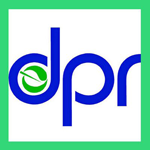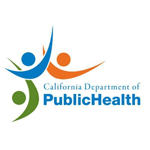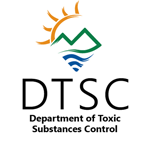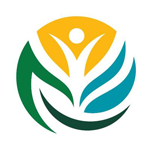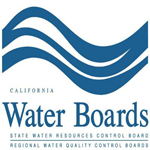
CA PFAS Timeline
CA Agencies' Actions on PFAS
What is PFAS, PFOA and PFOS?
Per- and polyfluoroalkyl substances (PFAS) are thousands of human-made substances that do not occur naturally in the environment and are resistant to heat, water, and oil. Perfluorooctanoic acid (PFOA) and perfluorooctanesulfonic acid (PFOS) are members of the PFAS family. PFAS have been used to make products stain proof, water-resistant and non-stick, like Teflon pans and waterproof coats.
Why We Care
PFAS do not naturally degrade in the environment over time. Some can accumulate within the human body and are toxic to human life at low concentrations. Exposure to unsafe levels of PFOA/PFOS may result in adverse health effects including liver damage, effects on the immune system, cancer and developmental effects to fetuses during pregnancy. The Office of Environmental Health Hazard Assessment (OEHHA) is in the process of evaluating the health effects for other PFAS compounds.
CalEPA and Other PFAS Actions
The California Environmental Protection Agency (CalEPA) has been coordinating with the US EPA and other governmental agencies over PFAS concerns since 2012. Below is a timeline highlighting CalEPA’s proactive measures to investigate and address PFAS contamination in California, as well as other US governmental PFAS-related actions.
From 2012-2015, CalEPA coordinated with US EPA to enforce the US EPA Third Unregulated Contaminant Monitoring Rule, which provided a basis for future regulatory actions to protect public health. During this period, US EPA sampled 2,807 public water supply wells in California for 6 PFAS compounds (PFBS, PFHpA, PFHxS, PFNA, PFOA, PFOS).
In September 2015, US EPA’s Chrome National Emission Standards for Hazardous Air Pollutants (NESHAP) set a ban on the use of PFOS in fume suppressants. NESHAP are stationary source standards for hazardous air pollutants.
In 2016, Biomonitoring California (program co-operated by Department of Toxic Substances Control [DTSC], OEHHA, and California Department of Public Health [CDPH]) conducted the Asian/Pacific Islander Community Exposures project (ACE 1), a study of metals and PFAS in Asian/Pacific Islander adults living in the San Francisco Bay Area. Biomonitoring California performed this study also in 2017 in a different Asian/Pacific Islander population, called ACE 2.
In May 2016, US EPA established Lifetime Health Advisory (LHA) limits for PFOA and PFOS of 70 parts per trillion (ppt) combined, and advised municipalities that they should notify their customers of the presence of PFOA and PFOS levels over those limits in community water supplies. The LHA is the level calculated to offer a margin of protection against adverse health effects to the most sensitive populations. Six public water supply wells exceeded the LHA during the 2012-2015 UCMR3 sampling in California.
In September 2016, because of the ban on PFOS-containing fume suppressants, five non-PFOS fume suppressants were approved by California Air Resources Control Board (CARB) for specified chrome plate operations (three products for decorative operations and chromic acid anodizing, and two products for hard chrome plating). The PFAS chemicals used in the list of non-PFOS containing fume suppressants are:
- PFHxA (Perfluorohexanoic acid)
- 6:2 FTS (Fluorotelomer sulphonic acid)
- 6:2 FTOH (Flurotelomer alcohol)
These chemicals and their uses within specific fume suppressants are confidential (this information is not shared by the trade names of the fume suppressants). Additional testing of non-PFOS chemical fume suppressants is underway and additional products will be added to the list as they become certified.
View the current list of chemical fume suppressants approved for use.
In November 2017, OEHHA added PFOA and PFOS to the list of chemicals known to the state to cause reproductive toxicity (developmental endpoint) under Proposition 65.
In July 2018, upon the recommendation of OEHHA, the State Water Board established Interim Notification Levels for PFOA and PFOS at 14 ppt for PFOA and 13 ppt for PFOS. Notification levels are a non-regulatory health-based measure for concentrations in drinking water that warrant public notification and further assessment. Establishing notification levels based on current health studies is an initial step toward setting regulatory standards for these chemicals in drinking water.
Biomonitoring California measured 12 PFAS in 425 Los Angeles County residents as part of the newly enacted regional surveillance study, California Regional Exposure Study.
In February 2019, the US EPA released a PFAS Action Plan to outline steps the agency is taking to address PFAS and to protect public health.
In March and April of 2019, the State Water Board held a board meeting to present the strategy for the state-wide PFAS orders for source investigations and adjacent public drinking water supply sampling. (Board Meeting Video) The State Water Board issued Investigative Orders to airports (30) and landfills (196). These Orders were issued to determine whether groundwater, and/or soil at their locations were impacted by PFAS (23 required compounds were included in the Orders). They also issued Sampling Orders to water systems to sample the public water supply in the vicinity of those airports and landfills (up to 18 required PFAS compounds included in these Orders).
In April 2019, CalRecycle began the informal regulatory process for SB 1335 (Allen, Chapter 610, Statutes of 2018) to regulate food packaging for State facilities. This included consultations with DTSC and OEHHA regarding toxic chemicals, such as PFAS in food service packaging.
In May 2019, OEHHA sponsored a workshop and webinar session to explore the use of new toxicological approaches to characterize PFAS toxicity.
In August 2019, the State Water Board lowered the notification levels for PFOA to 5.1 ppt and PFOS to 6.5 ppt in response to final recommendations from OEHHA, based on new data concerning PFAS toxicity.
In October 2019, the State Water Board issued Investigative Orders to Chrome Plating Facilities (271) that may have stored or used fume suppressants or other substances that may have contained PFAS. These Orders included the required sampling for 25 PFAS compounds.
On October 24, 2019, DTSC presented its initial findings from its evaluation of food packaging, released a background document on food packaging with PFAS, and initiated a public comment period on that topic.
On November 15, 2019, OEHHA held a webinar in connection with its initiation of the development of Public Health Goals (PHG) for PFOA and PFOS in drinking water, to allow public discussion of the available data on toxicity from studies of these chemicals in animals and humans. A PHG is a non-regulatory level of a contaminant in drinking water that does not pose a significant health risk.
On November 19, 2019, the State Water Board’s Divisions of Drinking Water and Water Quality provided an update on the PFAS actions taken to date to the board members of the State Water Board during a public informational item (Board Meeting Video)
In November 2019, DTSC-SCP released the draft product-chemical profile on treatments for converted textiles and leathers containing PFAS and initiated the public comment period. It then held the pre-regulatory workshop for this proposed Priority Product on December 9, 2019.
On December 4-5, 2019, the State Water Board held a 2-day seminar and associated datathon to share technical information about PFAS. Day 1. Day 2. This 2-day seminar highlighted the latest information surrounding the topics of: research, data analysis tools, analytical testing, toxicological effects, exposure pathways to humans and aquatic life, treatment and monitoring, and efforts to reduce PFAS in consumer products and packaging. Data scientists attending the datathon presented their efforts of PFAS source identification and prediction models through fingerprinting analysis and web-based tools developed to analyze large PFAS datasets.
On December 13, 2019, OEHHA co-sponsored with UC Berkeley a workshop to identify short and long-term steps towards identifying PFAS hazards, with a focus on chemical grouping and use of advanced toxicological approaches.
On December 19, 2019, the USEPA issued the memorandum "Interim Recommendations to Address Groundwater Contaminated with Perfluorooctanoic Acid (PFOA) and Perfluorooctanesulfonic". The memorandum serves to provide their initial recommendations for addressing groundwater contaminated with PFOA and PFOS at sites that have been evaluated under federal cleanup programs, including the Comprehensive Environmental Response, Compensation, and Liability Act (CERCLA also known as Superfund) and the Resource Conservation and Recovery Act (RCRA). This memorandum provides the role of screening, screening levels, and preliminary remediation goals for cleanup programs. Note: USEPA rescinded this memorandum on August 17, 2023.
In December 2019, the Department of Defense prohibited the use of fluorinated aqueous film-forming foam (also known as AFFF) in training exercises and recommended a screening level for PFOA and PFOS in groundwater. AFFF is a highly effective foam used for fighting chemical liquid fires. PFAS are the active ingredient in fluorinated surfactants used in AFFF products. PFOA and PFOS were part of the AFFF formations but was phased out by 2002 for PFOS and by 2016 for PFOA by the chemical manufacturers. Now, AFFF formulations contain fluorotelomer-based PFAS compounds.
Biomonitoring California measured 12 PFAS compounds in 358 residents of five Eastern and Southeastern counties (Riverside, San Bernardino, Imperial, Mono, and Inyo counties) as part of the continuing regional surveillance study for the California Regional Exposure Study.
On January 14, 2020, DTSC-SCP held a public workshop on PFAS and their alternatives in food packaging.
In January 2020, Assembly Bill 756 went into effect, which requires municipalities to notify consumers for PFAS detected above notification levels. This bill also authorizes the State Water Board to exercise broader authority to order a public water system to sample for PFAS.
In January 2020, Congress passed Federal HR 535, which directs US EPA to promulgate drinking water regulations for PFAS.
On February 27, 2020, EPA released an update to the 2019 PFAS Action Plan which outlined the steps that the agency is taking to address PFAS and protect public health. The update provides additional information on methods of testing for PFAS in drinking water, reducing PFAS exposure through cleanups, regulating PFAS in commerce, and more.
In February 2020, the State Water Board lowered the response levels to 10 ppt for PFOA and 40 ppt for PFOS in response to new data concerning PFAS toxicity. The response levels are based on a running four-quarter average.
In February 2020, the State Water Board requested OEHHA to evaluate and recommend notification levels for seven PFAS compounds: perfluorohexane sulfonic acid (PFHxS), perfluorobutane sulfonic acid (PFBS), perfluorohexanoic acid (PFHxA), perfluoroheptanoic acid (PFHpA), perfluorononanoic acid (PFNA), perfluorodecanoic acid (PFDA), and 4,8-dioxia-3H-perflourononanoic acid (ADONA) based on the presence of these compound being detected in public water supplies.
In March 2020, CalRecycle initiated the formal rulemaking process for SB 1335. The 45-day public comment period was extended from April 28, 2020 to May 21, 2020 due to the COVID-19 public health emergency. The proposed regulations include 100 parts per million limits on PFAS in food service packaging.
In April 2020, DTSC-SCP initiated the ESPR process on its proposal to list treatments for converted textiles and leathers containing PFAS as a Priority Product.
Before pausing the study due to the Covid-19 outbreak, Biomonitoring California collected blood samples from 90 residents of San Diego and Orange counties as part of the continuing regional surveillance study, California Regional Exposure Study.
On July 9, 2020, the State Water Board issued Investigative Orders to Publicly Owned Treatment Works (POTW) (249) that receive PFAS in their influent wastewater flow and then potentially distributed out of the POTW in the effluent wastewater, biosolids, and reverse osmosis concentrate. These Orders included the required sampling for 31 PFAS compounds.
On August 27, 2020, DDW issued General Order 2020-003-DDW for public water systems to sample and report PFAS based on the 2019/2020 public water systems sampling for PFAS.
On September 29, 2020, SB 1044 was signed into law. This bill adds language to the Health and Safety Code prohibiting a manufacturer of class B firefighting foam from manufacturing, importing, knowingly selling, offering for sale, or distributing class B firefighting foam for use in California. Any release of class b firefighting foam with intentionally added PFAS chemicals into the environment must be reported to the State Fire Marshal. The bill also prohibits the use of class B firefighting foam containing intentionally added PFAS chemicals in California after January 1, 2022. SB 1044 establishes oversight at the local and state level to ensure compliance with the new regulations, including the ability to levy civil penalties for non-compliance. Staggered compliance dates are provided for fixed foam systems, systems designed for 110 percent containment of discharge (January 1, 2024), and terminals and refineries (January 1, 2028). This ban does not apply if the use of class B firefighting foam is required by federal law.
October 7, 2020, PFAS Technical Presentation at State Water Board meeting summarizing the 2019/2020 data and investigation results at the airports, landfills, and public water systems (Board Meeting Video).
On January 1, 2021, the National Defense Authorization Act (NDAA) became law. The NDAA contained measures related to:
- The modification of DoD environmental restoration authorities to include Federal facilities used by the National Guard (Sec. 316, Pg. 1177)
- Transfer authority for funding of study and assessment on health implications of PFAS contamination in drinking water by ATSDR (Sec. 321, Pg. 1178)
- Replacement of fluorinated AFFF with fluorine free fire-fighting agent (Sec. 322, Pg. 1178)
- Prohibition of uncontrolled release of fluorinated AFFF at military installations (Sec. 323, Pg. 1179)
- Prohibition on use of fluorinated AFFF for training exercises (Sec. 324, 1179)
- The prohibition of PFAS in military meals ready-to-eat packaging (MREs) (Sec. 329, Pg. 1180)
- Disposal of materials or AFFF containing PFAS (Sec. 330, Pg. 1180)
- Data sharing between SecDef and local municipalities affected by PFAS and contaminants of emerging concern (CECs) originating from local military installations (Sec. 331, Pg. 1181)
- An agreement with States to address CEC and PFAS contamination (Sec. 332, Pg. 1181)
- Treatment of contaminated water near military installations (Secs. 341-345, Pg. 1183)
- A Comptroller General study on PFAS contamination (Pg. 1190)
- Prohibition on use of PFAS for land-based applications of firefighting foam (Pg. 1191)
- Provision of blood testing for firefighters of DoD to determine exposure to PFAS (Sec. 707, Pg. 1277)
- Funding for CDC ATSDR PFAS health study increment (Pg. 1291)
- Drinking Water (Secs. 7311-7312, Pg. 1741)
- PFAS Release Disclosure (Secs. 7321, Pg. 1742)
- USGS Performance Standard (Secs. 7331-7335, Pg. 1742)
- Emerging Contaminants (Secs. 7341-7342, Pg. 1742)
- Toxic Substances Control Act and other matters (Secs. 7351-7362, Pg. 1742)
Proposals not adopted:
- PFAS designation, effluent limitations, and pretreatment standards (Pg. 1744)
- Designation as hazardous substances (PFAS) (Pg. 1744)
On February 16, 2021, DDW issued General Order DW-2021-0001-DDW for public water systems to sample and report PFAS within and adjacent to Department of Defense facilities in the State of California. This Order pertains to facilities that have been identified as having used Aqueous Film Forming Foam (AFFF) known to contain PFAS chemicals through the Comprehensive, Environmental Response, Compensation, and Liability Act (CERCLA) process.
On March 5, 2021, DDW issued a drinking water notification level and response level of 0.5 parts per billion (ppb) and 5 ppb, respectively for perfluorobutane sulfonic acid (PFBS).
On March 12, 2021, the State Water Board issued Investigative Orders to Refineries and Bulk Fuel Terminals (161) for a one-time sampling effort to determine whether soil, groundwater, surface water, and influent and effluent wastewater at their locations were impacted by PFAS. These Orders included the required sampling for 31 PFAS compounds.
On July 1, 2021, The Department of Toxic Substances Control (DTSC) designated carpets and rugs containing per- or polyfluoroalkyl substances (PFASs) that are manufactured in or imported to California as a Priority Product. This designation requires domestic and foreign carpet and rug manufacturers that use PFAS and related chemicals in their products to submit a Priority Product Notification (PPN) for the affected products by August 30, 2021, with the goal of reducing human exposure to PFAS. Manufacturers will then be required to show intent to remove or replace PFAS in their products, remove the product from the market, or identify potential alternatives to PFAS to be used in the product by December 28, 2021. Milestones getting to this designation along with related documents and links are provided here along with a January 31, 2017 public workshop.
On July 22, 2021, The Office of Environmental Health Hazard Assessment (OEHHA) announced the release of a draft document for public review describing Public Health Goals (PHGs) for perfluorooctanoic acid (PFOA) and perfluorooctane sulfonic acid (PFOS) in drinking water. A PHG is a non-regulatory level of a contaminant in drinking water that does not pose a significant health risk. The public comment period for the draft document begins July 30, 2021 and ends September 28, 2021.
On October 5, 2021, Governor Newsom adopted Assembly Bill 1200 (Ting). AB 1200 will go into effect on January 1, 2023, and bans all plant-fiber based food packaging containing PFAS that have been intentionally added, or that are present at levels exceeding 100 parts per million total fluorine. In addition, starting on January 1, 2024, AB 1200 will also require cookware manufacturers to list any intentionally added chemicals, including any perfluoro chemical, to the handle or surface that will be in contact with food or beverage. The chemical list must be present on the product's physical label, as well as in online descriptions, and must be in both and English and Spanish.
On October 18, 2021 EPA Administrator Michael S. Regan announced the EPA's PFAS Strategic Roadmap. The EPA Strategic Roadmap sets timelines from 2021 to 2024 by which the EPA plans to take specific action and commit to new policies in an effort to further safeguard public health, protect the environment, and hold polluters accountable. Each step outlined in the PFAS roadmap represents the important and meaningful actions taken to safeguard communities from PFAS Contamination. Each step on the road map will build upon the last, leading to more protective and more enduring solutions. EPA summarizes completed or progress on actions mentioned in the roadmap at this website (https://www.epa.gov/pfas/pfas-strategic-roadmap-epas-commitments-action-2021-2024).
On December 6, 2021, CalRecycle adopted regulations regarding sustainable packaging in response to Senate Bill 1335 (also referred to as Sustainable Packaging for the State of California Act of 2018). Per SB 1335, food services in state-owned facilities, on state owned property, or under state contract, must use food packaging that is reusable, recyclable, compostable, and PFAS free. More information on SB 1335 and a list of approved regulations are available on the CalRecycle webpage.
On December 24, 2021, the Office of Environmental Health Hazard Assessment (OEHHA) added perfluorooctane sulfonic acid (PFOS) and its salts and transformation and degradation precursors to the list of chemicals known to the State of California to cause cancer for purposes of the Safe Drinking Water and Toxic Enforcement Act of 1986 (Proposition 65).
On February 25, 2022, the Office of Environmental Health Hazard Assessment (OEHHA) added perfluorooctanoic acid (PFOA) to the list of chemicals known to the State of California to cause cancer for purposes of the Safe Drinking Water and Toxic Enforcement Act of 1986 (Proposition 65).
On May 18, 2022, the EPA added five PFAS substances to a list of risk-based values. The values on the list are known as "Regional Screening Levels" and "Regional Remedial Management Levels", and help the EPA (and other agency programs - state and local) determine if a response or any remediation activities are warranted. This action taken by the EPA is an important step toward protecting the public from PFAS and also provides the Agency with critical tools needed the under the Comprehensive Environmental Response, Compensation, and Liability Act (CERCLA), also known as Superfund.
On April 28, 2022, The USEPA issued the memorandum, "Addressing PFAS Discharges in EPA-Issued NPDES Permits and Expectations Where EPA is the Pretreatment Control Authority". The memorandum aims to align EPA-issued wastewater and stormwater discharge permits under the National Pollutant Discharge Elimination System (NPDES), and pretreatment program with the goals articulated in the EPA's PFAS Strategic Roadmap. This includes enhanced monitoring provisions and the use of new analytical methods as well as the use of best management practices and the implementation of pollution prevention to address PFAS discharges at the source.
On April 1, 2022, The Department of Toxic Substances Control (DTSC) amended section 69511 to designate treatments containing per- or polyfluoroalkyl substances (PFAS) for use on converted textiles and leathers that are manufactured in or imported to California as a Priority Product. A Priority Product is a consumer product identified by DTSC that contains one or more chemicals, that have hazardous traits that can harm people or the environment. This goal of this designation is to reduce human exposure to PFAS by requiring all converted textiles and leathers that use PFAS and other related chemicals in their products to submit a Priority Product Notification for the affected products.
On June 15, 2022, the Environmental Protection Agency released updated interim drinking water lifetime health advisories (LHA) for PFOA (0.004 nanograms per liter [ng/L] or parts per trillion [ppt]) and PFOS (0.02 ng/L) and final LHAs for Gen-X (10 ng/L) and PFBS (2,000 ng/L). While calculating each LHA, the EPA considered many sources of PFAS other than drinking water. These alternate sources included air, food, dust, and consumer products. These interim health advisories will be in place until the EPA's forthcoming National Primary Drinking Water Regulation for PFOA and PFOS are in effect. The EPA also announced $1 billion available in annual grant funding for the next five years through the Bipartisan Infrastructure law - to address PFAS and other emerging contaminants in drinking water, specifically in small or disadvantaged communities.
On August 26, 2022, the USEPA issued a proposal to designate the two most widely used PFAS substances (PFOA and PFOS) as hazardous under the Comprehensive Environmental Response Compensation, and Liability Act (CERCLA), also known as Superfund. The proposal is an attempt to increase transparency around the releases of these harmful chemicals, while also holding the polluters responsible for cleaning their contamination.
On September 8, 2022, the EPA released the data from a study done in March 2021 titled "Rinses From Selected Fluorinated and Non-Fluorinated HDPE Containers". In that study, the Analytical Chemistry Branch (ACB) concluded that tested fluorinated High Density Polyethylene (HDPE) containers used to store and transport a mosquito control pesticide product have certain PFAS on/in their walls and that those PFAS compounds are liable to leach into liquid products stored in the container. The study tested the impact of a number of variables, including the duration that the liquid was in the containers, as well as different types of liquids (including but not limited to water and ethanol). The study was not designed to produce any quantitative data for the leaching PFAS.
On September 29, 2022, the Governor approved two pieces of legislation regarding PFAS: AB 2771 (Friedman) Cosmetic Products and AB 1817 (Ting) Textile Products. AB 2771 updates existing law so that beginning on January 1, 2025, all persons and entities are prohibited from selling, delivering, holding, or offering for sale, any product that contains intentionally added PFAS. The existing law for AB 1817 prohibits the distribution, sale, or offer for sale, of any food packaging that contains regulated PFAS substances and also requires the manufacturer to use the least toxic alternative when replacing the PFAS in the product. Beginning on January 1, 2025 the new AB 1817 extends those same prohibitions to textile articles containing PFAS.
On October 31, 2022, DDW issued General Order DW-2022-0001-DDW for public water systems to sample and report PFAS. This Order rescinds and replaces previously issued Orders DW 2020-0003-DDW and DW-2021-0001-DDW.
On October 31, 2022, DDW issued a drinking water notification level and response level of 3 parts per trillion (ppt) and 20 ppt, respectively for perfluorohexane sulfonic acid (PFHxS).
On September 28, 2023, the USEPA finalized reporting and recordkeeping requirements for PFAS under the Toxic Substances Control Act (TSCA). The final rule requires persons that manufacture (including import) or have manufactured these chemical substances in any year since January 1, 2011, to submit information to EPA regarding PFAS uses, production volumes, byproducts, disposal, exposures, and existing information on environmental or health effects. The final rule includes 41 additional PFAS that were identified as being of concern. EPA has determined that at least 1,462 PFAS that are known to have been made or used in the U.S. since 2011 will be subject to the final rule. The final rule also streamlines reporting requirements and reduces the burden for those who made or used small quantities of PFAS for research and development purposes and for those who imported PFAS contained in articles into the U.S.
In January 2024, EPA released two non-drinking water analytical testing methods for PFAS. The first method published is Method 1633, “Analysis of Per- and Polyfluoroalkyl Substances (PFAS) in Aqueous, Solid, Biosolids, and Tissue Samples by LC-MS/MS.” This method includes 40 PFAS compounds and is applicable for wastewater, surface water, groundwater, soil, biosolids, sediment, landfill leachate, and fish tissue samples. This method can be used in various applications, including National Pollutant Discharge Elimination System (NPDES) permits. The second method published by EPA is Method 1621, “Determination of Adsorbable Organic Fluorine (AOF) in Aqueous Matrices by Combustion Ion Chromatography (CIC).” This method measures the aggregate concentration of organofluorines (molecules with a carbon-fluorine bond) in wastewater.
Please visit the December 2024 section below for information on an update to Method 1633 by the EPA
In March 2024, the EPA Built on the guidance set forth by the EPA in 2020, and published the 2024 updated interim guidance. This guidance, presents the currently available information on the destruction and disposal of PFASand other PFAS - containing materials. This latest update identifies and provides information on Thermal Destruction, Landfills, and Underground Injection which are the three major methods available to remediate, dispose, and destroy PFAS. This guidance is meant to be a resource for decision makers to assist with selecting the appropriate method that best suits the characteristics of the waste in question.
On March 4, 2024, DDW issued General Order DW 2024-0002-DDW for public water systems serving disadvantaged communities to sample and report PFAS. This Order provides free sampling services to be conducted by a State Water Board's contractor.
On April 10, 2024, the EPA announced a final rule "National Primary Drinking Water (NPDWR)" for six different PFAS compounds. This final rule was informed by evaluating over 120,000 comments submitted by the public as well as input received during consultations and stakeholder engagement, establishes legally enforceable Maximum contaminant levels for several substances under a hazard index MCL. More information is provided in the EPA website.
On April 8th, 2024, The Office of Environmental Health Hazard Assessment (OEHHA) took a step toward addressing long-term effects of PFOA and PFOS by adopting a Public Health Goal (PHG) for PFOA and PFOS in drinking water. The PHG specifies the level of drinking water contaminant that does not pose a significant risk to health lifetime uses of tap water. The final PHG for PFOA is .007 parts per trillion (ppt) and 1 ppt for PFOS. A technical support document detailing the calculation of the PHGs and presenting the available scientific information on the toxicity of PFOA and PFOS is available on OEHHA's website.
On April 19th 2024, the USEPA took another step in an effort to protect the public from PFAS by designating perfluorooctanoic acid (PFOA) and perfluorooctanesulfonic & acid (PFOS) as hazardous substances under the Comprehensive Environmental Response, Compensation, and Liability Act (CERCLA). Designating these substances under CERCLA (also known as superfund) will enable the investigation and cleanup of these chemicals ensuring that leaks, spills, and other releases are reported and that polluters are held responsible.
The EPA will also be issuing a separate CERCLA enforcement discretion policy that clarifies that the EPA will be focusing enforcement on “parties who significantly contributed to the release of PFAS chemicals into the environment including parties that have manufactured PFAS or used PFAS in the manufacturing process, federal facilities, and other industrial parties.” The enforcement policy also provides clarity on the agency’s intent not to purse parties such as farmers, municipal landfills, water utilities, municipal airports, and local fire departments.
On July 10, 2024, in accordance with the Clean Water Act, the EPA updated its recommendations for monitoring contaminants in locally caught freshwater fish. New additions top the list include PFAS, along with lead, cyanotoxins, a flame retardant, and amphetamines. This latest update aims to enhance protection from these “forever chemical” substances by ensuring that State, Tribal, and territorial advisories reflect the latest scientific findings. States and Tribes are encouraged to monitor twelve PFAS and other contaminants in fish, using local data to issue consumption advisories where necessary. The EPA emphasizes the importance of consulting local advisories when determining safe levels of consumption for freshwater fish and shellfish caught in rivers and lakes.
In October 2024, the U.S. Environmental Protection Agency (EPA) finalized non-regulatory water quality criteria and information benchmarks for ten PFAS chemicals. These criteria are based on the effects of PFOA and PFOS on freshwater organisms. Additionally, the EPA has established informational benchmarks for eight other PFAS from short-term exposures in freshwater to aquatic life, as well as for PFOA and PFOS in saltwater.
In December 2024, the EPA published an updated Method 1633A, “Analysis of Per- and Polyfluoroalkyl Substances (PFAS) in Aqueous, Solid, Biosolids, and Tissue Samples by LC-MS/MS”. The final Method 1633A was proposed for approval at 40 CFR Part 136.3 in December 2024 (docket number EPA-HQ-OW-2024-0328). However, Method 1633A is not nationally required for Clean Water Act compliance monitoring until the EPA has promulgated it through rulemaking. For more information on the changes to this Method, please visit CWA Analytical Methods for Per- and Polyfluorinated Alkyl Substances (PFAS) | US EPA.
In May 2025, DDW requested the Office of Environmental Health Hazard Assessment (OEHHA) establish a Public Health Goal (PHG) for Perfluorohexane Sulfonic Acid (PFHxS). Based on reported drinking water system monitoring data collected since 6 May 2019, 130 public water systems that serve a population of approximately 9.7 million people are impacted with PFHxS. An enforceable California primary drinking water system has not been established for PFHxS. The State Water Board intends to promulgate a maximum contaminant level (MCL) for PFHxS, requesting OEHHA establish a PHG for PFHxS so that MCL rulemaking work may proceed.
On May 14, 2025, the EPA announced intentions to revise the final rule of the National Primary Drinking Water Regulations (NPDWR) for six PFAS (issued April 10, 2025) The final rule included drinking water Maximum Contaminant Levels (MCLs) for six PFAS (PFOA, PFOS, PFBS, PFHxS, PFNA, and HFPO-DA (also known as Gen-X)). Public water systems were required to perform initial compliance monitoring until 2027 and comply with the MCLs by 2029. The announcement involves the following intentions:
- Extend the compliance deadlines for PFOA and PFOS to 2031.
- Establish a federal exemption framework.
- Rescind the regulations and reconsider regulatory determinations for the other four PFAS (PFBS, PFHxS, PFNA, and HFPO-DA).
- Documentation and resources for the implementation of the NPDWR.
In July 2025, the SF Bay Regional Water Quality Control Board issued an update to the Environmental Screening Levels (ESLs). The Site Cleanup Program provides the most current version of the ESL documents, including the ESL Workbook, Summary Tables, and User’s Guide.
On June 27, 2025, the Division of Drinking Water proposed to revise notification levels for perfluorooctanoic acid (PFOA) and perfluorooctane sulfonate (PFOS) to 4 parts per trillion (ppt), revise the response level for perfluorohexane sulfonic acid (PFHxS) to 10 ppt, and establish a notification level and response level for perfluorohexanoic acid (PFHxA) of 1 part per billion (ppb) and 10 ppb, respectively. An informational item on the proposed notification and response levels was presented at the August 6, 2025, Board Meeting. All proposed notification and response levels are based on peer reviewed recommendations from the Office of Environmental Health and Hazard Assessment.
On October 29, 2025, California issued new and revised drinking water notification levels for PFOA, PFOS, PFHxS, and PFHxA.
The current notification and response levels for these four PFAS are shown below:
- PFOA: notification level = 4.0 ng/l, response level = 10 ng/l
- PFOS: notification level = 4.0 ng/l, response level = 40 ng/l
- PFHxS: notification level = 3.0 ng/l, response level = 10 ng/l
- PFHxA: notification level = 1.0 ug/l, response level = 10 ug/l
Notification and response levels are health-based advisory levels established for contaminants in drinking water that lack maximum contaminant levels (MCLs). They are established as precautionary measures for contaminants that may not be considered candidates for establishment of MCLs but have yet to undergo or complete the regulatory standard setting process prescribed for the development of MCLs and are not drinking water standards.
On December 12, 2025, the Division of Drinking Water issued PFAS General Order DW-2025-0002-DDW requiring community and nontransient-noncommunity water systems to conduct initial monitoring for per- and polyfluoroalkyl substances (PFAS).
Subscribe to our Per- and Polyfluoroalkyl Substances (PFAS) email list to receive notifications and the latest updates. After subscribing, you will need to check your email host for a confirmation email to complete the subscription.
Subscribe to our other email lists. See the "Water Quality" section.
Quick Links
Questions? Comments?
If you have questions about our program, please email us at:
For additional information about PFAS
- Division of Drinking Water District Engineers
- GeoTracker Help Desk
- ITRC PFAS Fact Sheets (English and Spanish)
- Regional Water Board Contacts
- US EPA PFAS Website
- San Diego Regional Water Quality Control Board — PFAS website
- San Francisco Regional Water Quality Control Board — PFAS website
- Santa Ana Regional Water Quality Control Board — PFAS website
- Los Angeles Regional Water Quality Control Board – PFAS website



